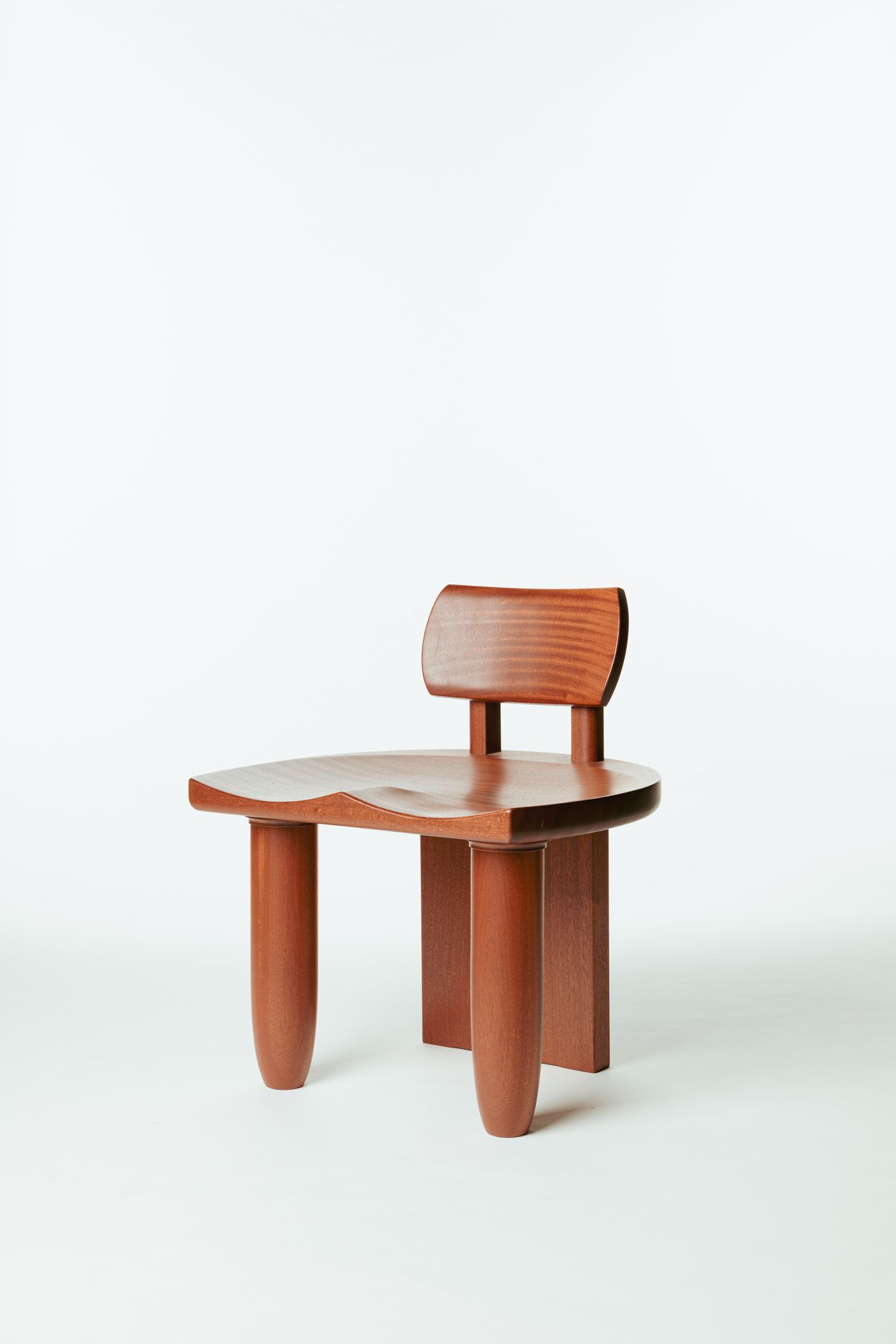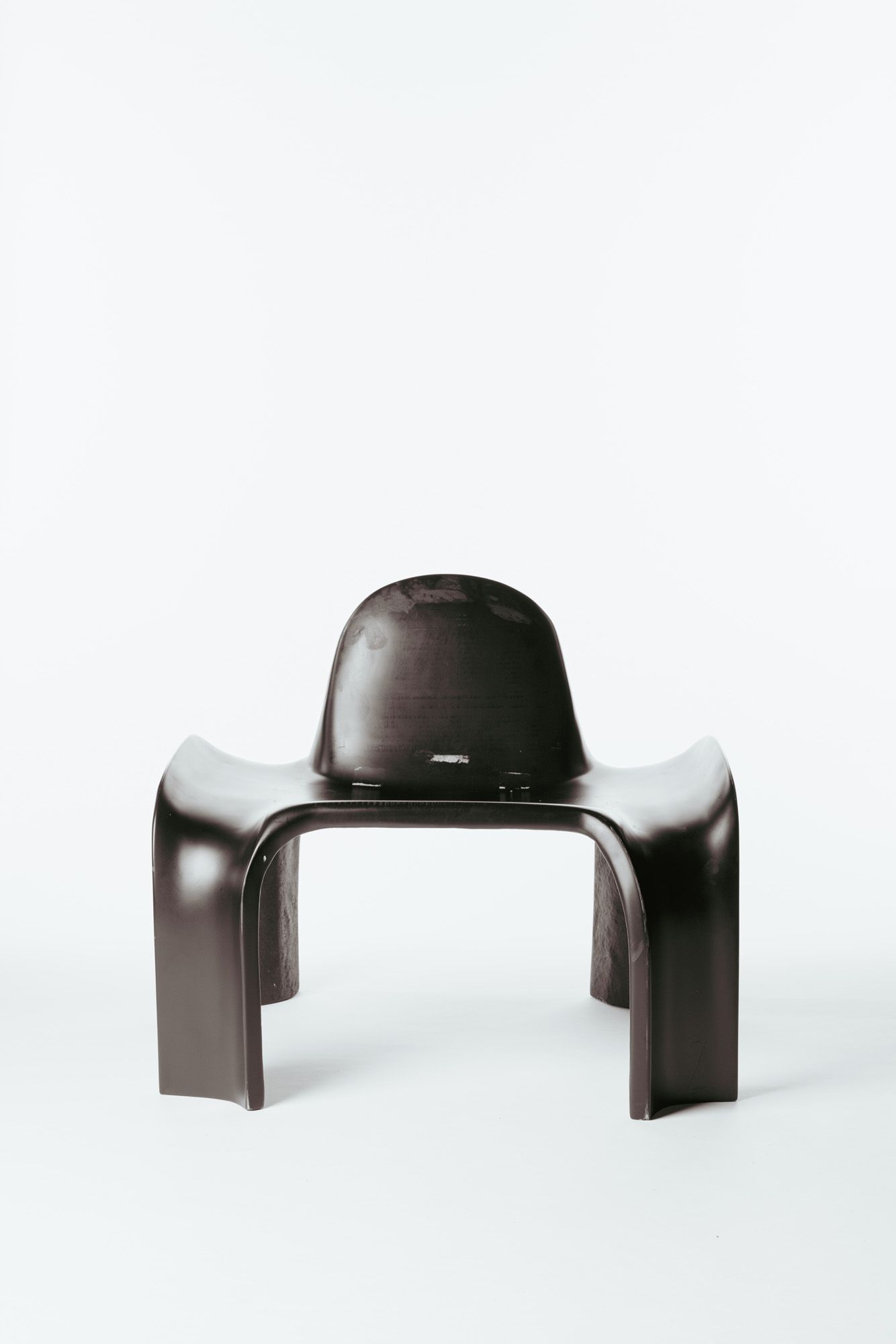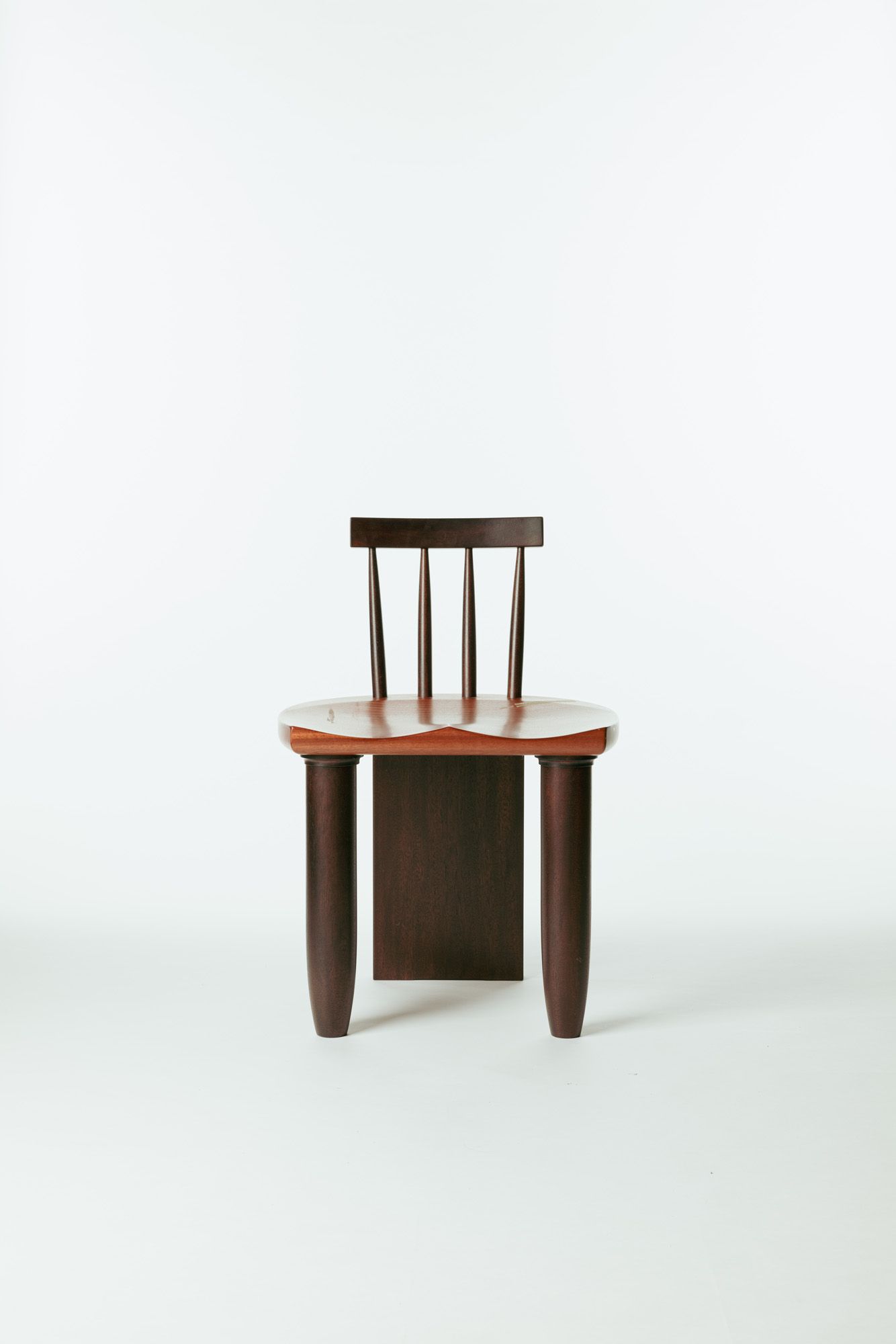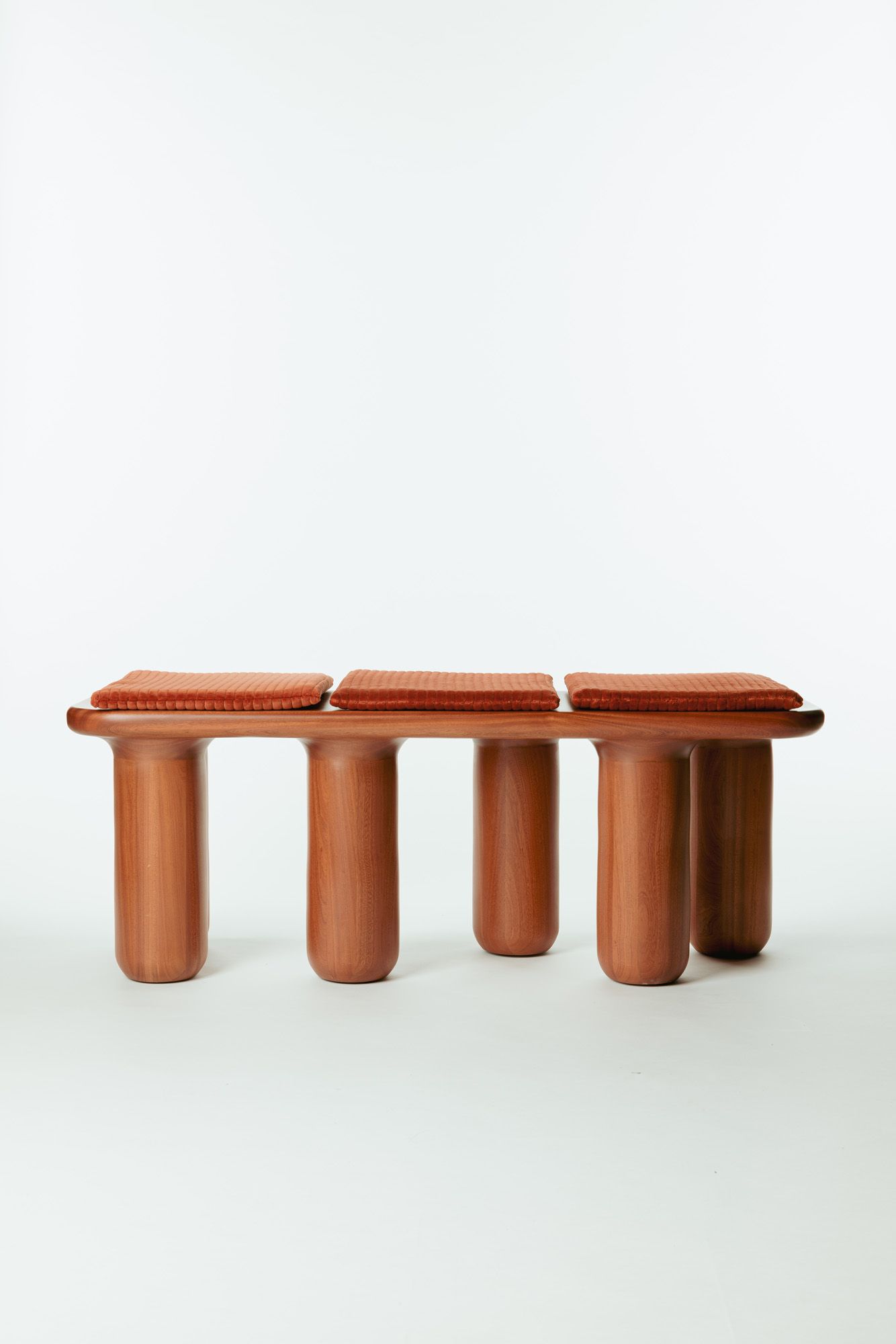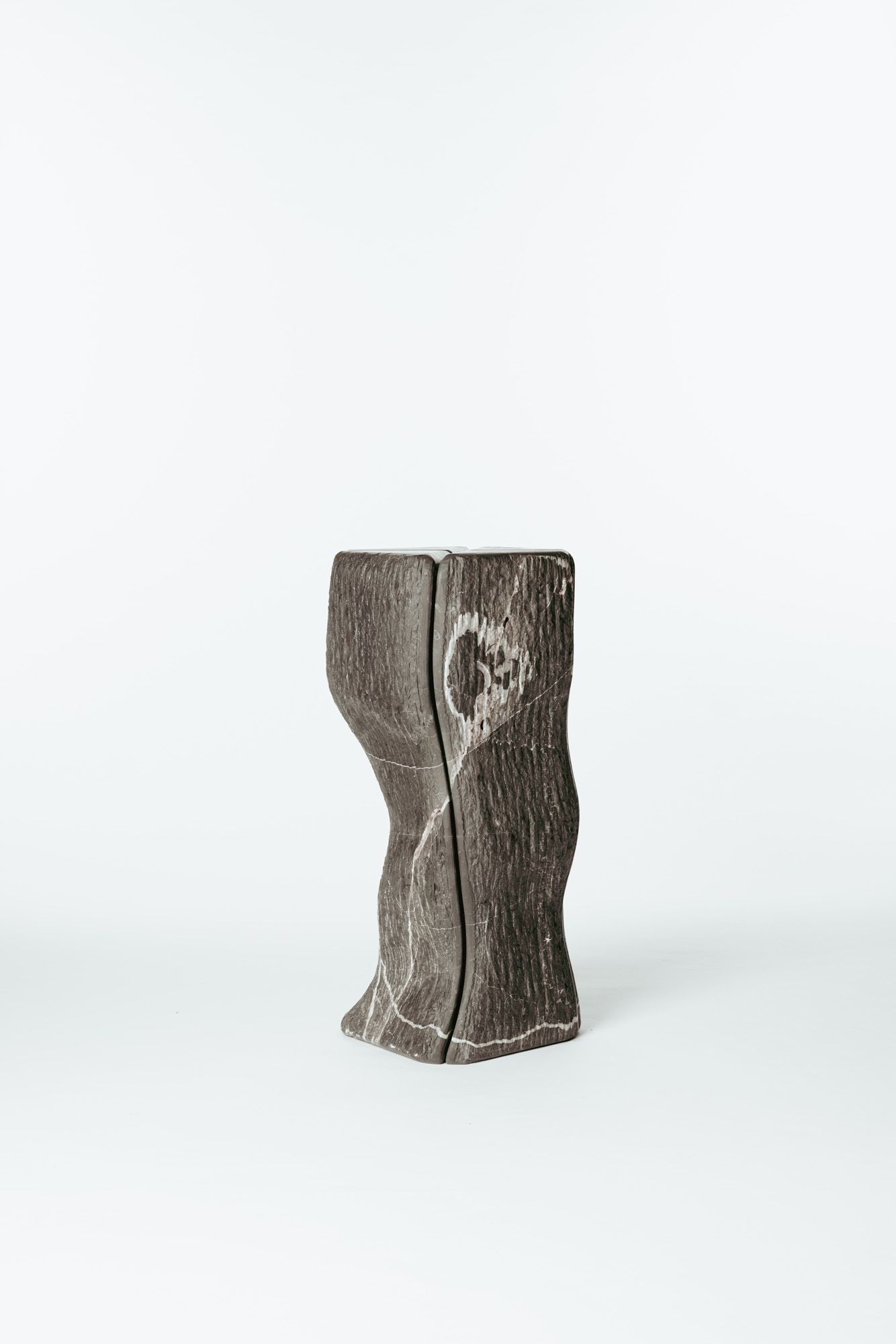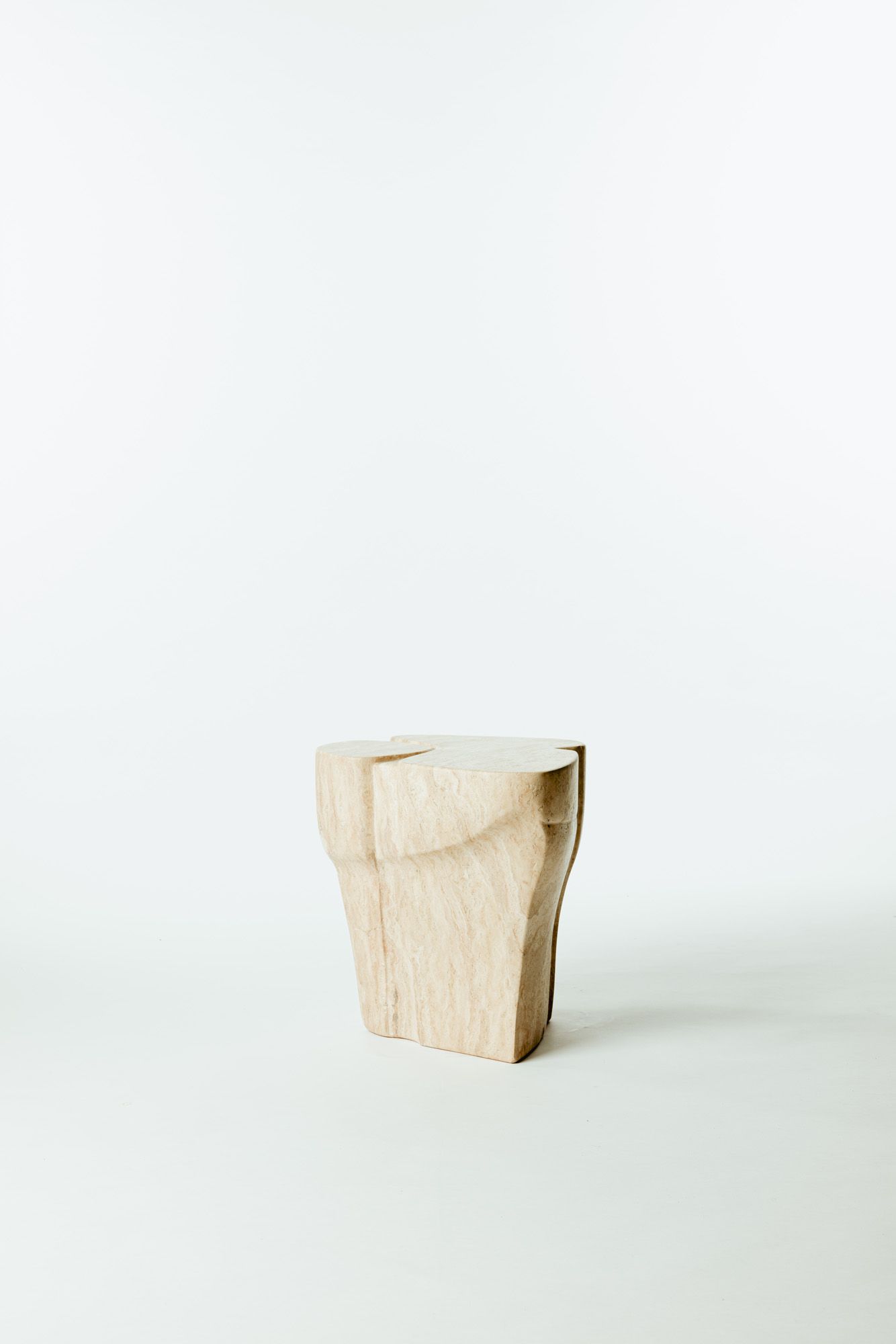Michael Bennett might not be a household name in the design world, but in the realm of American football, he is as big as it gets. He played an incredible 11 seasons with the likes of the Dallas Cowboys, Tampa Bay Buccaneers and Philadelphia Eagles, as well as winning the Super Bowl with the Seattle Seahawks in 2014, before retiring from the sport in 2020. A prominent anti-racist campaigner, who frequently spoke out against the injustices of the sport, Bennett’s many efforts included setting up an endowment at the Rhode Island School of Design in 2021 to enable more people of colour to get into design.
‘Paw Paw’s’ dining chair in African Sapele
(Image credit: Courtesy Studio Kër and Marta)
‘In some ways, design has always been a part of my life,’ says Bennett, who is a graduate of the Heritage School of Interior Design and is currently finishing an architecture degree at the University of Hawaii. ‘My grandpa was a welder. He built his church with his own hands, and we would make things. I never thought of them as being designed, but we built a shed, a barbecue grill and stuff for the hog pen.’
Now Bennett marks a new chapter in the form of Studio Kër, a design studio he established in 2020, that took full form after he met the late industrial designer Imhotep Blot in 2021. Together, they drew from their shared upbringings in the coastal American south, and their African and Haitian roots, to create a collection of sculptural furniture that explores themes of intersectionality, segregation and the American ghetto, alongside the identities and experiences of African Americans and the diaspora. Each piece is rooted in the ideas of place and community through references to historically Black cultural motifs and object-histories, and consciously challenges dominant Western domestic codes.
‘Gumbo’ chair in fibreglass
(Image credit: Courtesy Studio Kër and Marta)
‘I think that every object has the ability to be what someone wants it to be,’ says Bennett. ‘That’s how I like to think about design. There is no true idea that everything has to be one way. There’s a lot of that going on in architecture and design. You’re forced to follow this European way of thinking. If you ask 100 people for their gumbo recipe, no one will tell you the exact same one. Our collection is interesting and unique. It’s not the same thing over and over. When you hold these objects, there’s this sense of communion and closeness of what it’s like to be Black in America.’
It’s apt that Studio Kër’s first collection focuses on the home. Even its name, Kër – which refers to the traditional family living arrangements and sense of togetherness within Wolof culture, the largest ethnic group in Senegal – exudes a deep reverence for this fundamental and universal typology. Bennett and Blot have reimagined domestic mainstays, such as tables and seating, while imbuing them with poignant references to Black history. The ‘Gumbo’ lounge chair draws from the ubiquity, democracy and versatility of DC Simpson’s 1946 stacking polypropylene ‘Monobloc’ chair. Realised in fibreglass with a matching cushion that can be laid on top of it or on the floor, the lounge chair signifies a new approach in African diasporic design while retaining the same emphasis on fellowship, exchange, utility and generosity that’s present in Black gathering spaces.
‘Paw Paw’s’ dining chair in African Sapele and Argentine Rosewood
(Image credit: Courtesy Studio Kër and Marta)
Equally meaningful is the ‘Mo-Mo’ dining table, a large circular table designed to seat up to ten people. It’s inspired by Akili Ron Anderson’s bas-relief frieze Last Supper (1982), which was commissioned by the New Home Baptist Church in Washington DC and only recently discovered, in 2019, after decades hidden behind drywall. Topped with a central rotating tray for distributing food, it reinforces the studio’s ethos of designing pieces that encourage communion and discourse while also nodding to West African griots (storytellers) and the Black matriarchs behind them.
‘As a Black person growing up in America, you have these rituals and traditions, but you don’t understand the connection. You think it’s a singular event, but, in reality, it’s a chain of events and suddenly gumbo isn’t a Southern thing, it’s an African thing. There’s a twist to it that makes it American. So in a sense, this collection is about Black history. These forms are African, but they also have a twist of America and that’s where the new diaspora meets in the middle to dialogue with the past,’ he says, adding that even in details like the asymmetric spines of the ‘Paw Paw’s’ dining chair, which is available in African Sapele or Argentine rosewood, there are nods to the forms and geometries traditionally seen in West African culture. ‘As a Black designer, you have to be able to tell stories of your history because not a lot of people have the platform.’
‘Cape Mantle’ bench in African Sapele
(Image credit: Courtesy Studio Kër and Marta)
Despite the unexpected passing of Blot earlier this year, Bennett has continued on the path to bring the duo’s designs to life. ‘It’s been emotional. He was young, just 27,’ he says. ‘We went really deep into what African design is and what the future of design is for Black people. We wanted to create an archive, and document the process of Black design. To this day, I don’t think I have really dealt with losing him. He’s not here, but the main thing that we always talked about was how do we create something that outlives our physical beings and becomes a part of the universe.’
Studio Kër’s debut will be shown in Chicago by LA gallery Marta and Theaster Gates’ Rebuild Foundation in a presentation titled ‘We Gotta Get Back to the Crib’. On view until 11 February 2024, it will be the first design intervention to inhabit Rebuild’s newest creative project, 6 Flat, which will become artist residences when the formerly vacant St Laurence Elementary School reopens as an arts incubator (Rebuild’s past projects include the Stony Island Arts Bank). The show will later travel to Marta in LA and then Houston.
‘Block 2’ in black Zeus stone
(Image credit: Courtesy Studio Kër and Marta)
‘As Black people, we have to travel to white galleries to see things. I’m not saying that we shouldn’t have things in these spaces, but I also think that there is an opportunity for people of colour to experience things within their own community in places that are already there,’ says Bennett. ‘Also, does it have to be a white box? If we expect things to change, then we can’t always use the same systems over and over. We have to start rethinking them. Having this show at Rebuild speaks a lot because what Theaster Gates is doing culturally is phenomenal. It’s important that, as Black people, we see design happening within our community. Because once we see design, we start to think about how we can use it and about rebuilding.’
Michael Bennett, ‘We Gotta Get Back to the Crib’ is on view until 10 Feburary 2024
6 Flat, Rebuild Foundation
6760 S Stony Is Ave
Chicago, Illinois
‘Block 1’ in red travertine
(Image credit: Courtesy Studio Kër and Marta)

